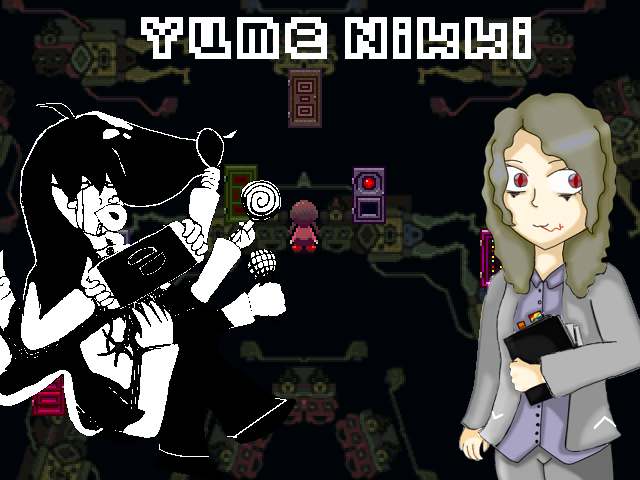The time machine does not move from 2004.
So much has happened in 2004. Only in the first two months, the Spirit probe from NASA gave the first images of Mars, then it was invented Facebook, at the cinema there was Mel Gibson’s The Passion and … Oh, right, in a month not well accurate Ao Oni was on some computers.
But a few months later to the summer of that year, the title silently as we mentioned previously here on Back to the Future, was released a game that would become a real cult of ” gaming abstractionism”.
In 2004, while some escaped from the blue monster, many players found themselves opening a disturbing and disorienting dream journal.
“This game, with a dark atmosphere, it allows you to explore the world within a dream. There isn’t a history or any special purpose. It is simply an exploration game “(Description of Yume Nikki on Kikiyama’s website)
A “simple exploratory game,” is how it is described by the author himself Yume Nikki. These are as simple premise, however, have given rise to what is almost 60% of the internet population knows or at least has had a taste, such as the strange creatures in the game.
In this regard we would like to mention one of those pages error that sometimes is seen in internet sites … Those who say, generally, “Error 404 Not Found” .here, Ele one day he saw one of these pages that had the background one of the OST game ( “Working, please wait …” or, in the original language, “ゆ め に っ き”), Even if the site was not in any way Yume Nikki related, judging by the address. Unfortunately this page no longer exists, even if we have evidence that there had been.
It must have been a deliberate choice because those who had the site previously knew the game? Or have found that music as well, hanging out in the internet?
In any case, Yume Nikki was one of those titles that he knew more than others and bring interest to the current even those who were not well versed on the RPG genre Horror. But this is because of what?
Let’s find out together.
Product History
Compared to Ao Oni, people have done more research about where Yume Nikki started.
The first proper forum in which it was published was 2Channel (at least, at the time, now has been renamed to 5Channel). Even just looking at Wikipedia, you can read that when the game just came out did not have much popularity, because when it was published the very first time it was also a rather incomplete game, which have followed many versions that were used primarily to fix bugs.
The latest version, in fact, dates back to 2005. After that year there were no more updates… But we’ll talk more in the section dedicated to the author-work relationship, because there is something more disturbing and complicated behind this lack of updates.
So, back to us, Yume Nikki became popular with time, also earning an English translation, which made it popular in the West.
And here, when it began to spread, we noticed a rather unusual phenomenon for the HOR-RPG current.
In a review of a fairly recent game we began a speech: that of the difference between “active spectators” and “passive.” We glue the definition here
“Those who watch an audiovisual product is obviously a passive spectator: can” sit there watching “and his actions do not affect the behavior of any of the characters, as well as the environment and so on, as opposed to video games: why a gamer we can consider an active viewer. “
Starting from here, in that review has been pulled out of the question that now the games considered HOR-RPG (but it will happen this right from the Generation 1 RPG Horror, The Character Drama) are followed and played mainly as passive spectators, given the lack of experience of active viewers, do not have a full understanding on the development of gameplay, and therefore tend to be many times also misconceptions about the titles they want to talk.
For example, Ao Oni has unfortunately suffered this treatment: some players born just as passive viewers have complained about the lack of narrative, instead who has always been an active spectator flew over, and he liked riddles, chases, etc.
Why Yume Nikki is a special case, then, from the point of view of the community?
The reason is that this gap between those who have actually tried it, and lived the 360-degree gaming experience; is because there is no history: Yume Nikki is much more to play than to see, there are very few passive spectators, if we look at the content published on the internet.
To indicate the type of community that generally has surrounded the HOR-RPG take two Italian YouTube channels, always one of the platforms that have caused the mouth of the genre.
The two channels are Rikkukun and Giulyagatta97.
Rikkukun has always treated and (I guess)will always treat video games. He will definitely had experiences as a passive spectator, but you can tell that its main industry, and the world which are the focus is gaming.
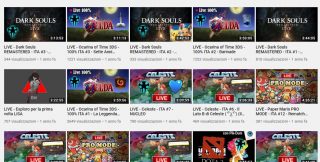
Quite classic games from gaming’s most iconic series: The Legend of Zelda, Dark Souls, Paper Mario, DOTA, although in the image we can see Lisa and Celeste, games with a bit more present narrative.
Let’s move on to Giulyagatta’s channel.
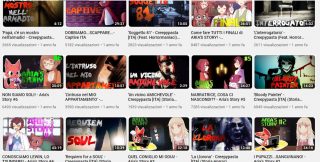
She already has a completely different channel. Yes, she also played some games (recently is carrying on a Dragon Age II series) along with creepypasta and other content-when she was starting her career on Youtube she was famous for AMVs, if you get the idea-but the games that she chose to treat have a particular criterion that departs types of video of a person born as an assiduous passive spectator, as a person born as a regular active viewer.
The importance and / or the preponderance of a narration.
I’m not saying that channels like Giulyagatta repudiate Zelda or those like Rikkukun repudiate a visual novel or a Telltale game, but just these channels have different selection criteria on what to bring on their channel.
Dragon Age II, Hellblade: Senua’s Sacrifice (there wasn’t however a real gameplay of this title, but only a fandub) Aria’s Story, various other RPG Horror belonging mainly to Generations 1, 2 and 3, and even among those the most narrative ones…
So massive plot and / or complicated, with characters that people would also become attached to “freak out” all together … It is what generally a criterion when choosing an audiovisual or literary work in many cases.
Here, channels like Rikkukun, for example, would not likely bring Aria’s Story. Simply because the criterion here I think is generally good gameplay. If there is a beautiful narrative, that’s also nice.
And then? Aaaaaall this blah-blah-blah on Youtube what has to do with Yume Nikki?
Aaaall this blah-blah-blah was to bring this major question.
In your opinion, which channel brought Yume Nikki?
…
…
I don’t know what you said, but the solution is Rikkukun!
Giulyagatta first claimed to have read the manga of Yume Nikki instead, and then there’s just no video on her channel of any gameplay of this title.
Right now we talked about these two cases in the Italian community because they were more “extreme.” However, we can say that the cases of those who want a dominant narrative despite being a gamer are many. In the new decade, there are many examples even in the community of Youtube America: more and more channels, such as JackSepticEye and NicoB have expanded their entertainment at very narrative games (especially NicoB brought on his channel all Kingdom Hearts games, all Danganronpa games and i think also all Ace Attorney games) such as Life is Strange, Undertale, and a more recent case was Detroit Become Human, for a public often formed by many gamers, however … Those series had a lot of success.
Even in 2004 the situation was not too different: like, Metal Gear Solid 3 Snake Eater and Half Life 2 were out! Resounding successes because of the story, the characters and the narrative in general…
But on that year made its way into the hearts of many players also Yume Nikki, who awakened the nature of 360° players, that just simply acknowledge wisely, thanks to their experience, the experience of playing also something that has no dialogue, nor any kind of cut-scenes: if we want to overdo it, almost a curse for those who are born passive spectator.
So the thing is that the Yume Nikki community, compared to other games considered HOR-RPG, is very unique because it’s not mainly formed by passive spectators that in the 60% (indicative measures) of cases have followed the game from their favorite youtuber but as active viewers who continued to play not to get excited about other people’s experiences, but “live their own”.
But what made this so-called actually so special and mystical experience? Why it was so addictive? We will begin to list here some points, but everything will be detailed in the section of the Trump Card.
The atmospheres (Generation 0, what can we say?) have greatly helped the game and have been given by her mesmerizing loop, the condition of general isolation, creatures …
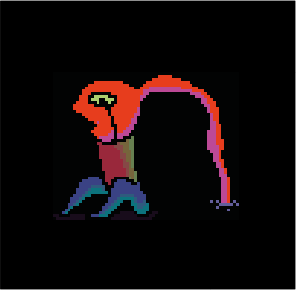
… Well, that are a good part of the oddities that you may very well see in a dream world and vast environments, often disturbing but mostly confusing.
“Confusing” One of the first adjectives that can give Yume Nikki and connects it with the style of the maps, both with the gameplay, but more about that in the section.
Even outside his native land for these reasons the game was praised by many critics gaming sites (which is quite unusual given that these sites generally do not often treat games of HOR-RPG current), the public and even by many developers independent, including the game designer Derek Yu (who worked for I’m O.K. and Acquaria with Alec Holowka), who appreciated very much the game of comparing graphic style even at Earthbound.
“I really like this game. The lack of dialogue or any kind of “action” gives me this strange sense of terror. I also like the contrast between the tiny apartment and the huge world of dreams. And visually, the game reminds me a lot Earthbound (especially Moonside!) And cactus, which is a really fantastic and terrifying mix. ” -Comment Derek Yu on Yume Nikki on site tigsource.com
This popularity both in East and West earned the game … We have to breathe deeply once again …
A manga, a light novel, an album by Vocaloid (Wow, that’s new!), A soundtrack published in two volumes and it’s also on Amazon Music, arrangements of this same soundtrack, a reboot (which will be discussed later but, gosh, I have already chills), an application for Android and iOS from minigame of NASU and … Fangames.
Ah, here we go again! Kikiyama, like their companion noprops, had various titles inspired by their work. These include Yume 2kki and .flow
Yume Nikki, however, had more luck than Ao Oni: first of all, these games can’t be defined as clones or copies, but simply games inspired by the style, the gameplay of the game or its initial ideas because, returning to the community speech of before, they were made by gamers (and it has to be considered as a criterion, believe us).

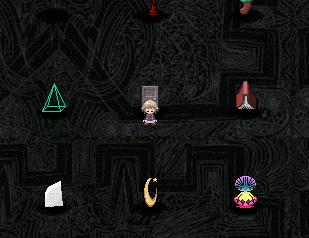
Comparison of the two nexus: Yume Nikki (left) and Yume 2kki (right)
The main difference is that Yume Nikki is not an easy game to replicate as Ao Oni from the point of view of the atmosphere, for example, and this has somewhat ” forced ‘the authors of these games to man up and also have some original ideas that can deviate much more from what the original author had created.
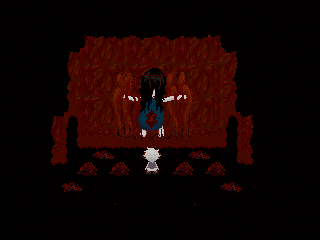
Screenshot from .flow
The biggest problem of what came after Yume Nikki, surprisingly, were not in fact the fangames… Rather the ancillary works (we will talk mostly of the manga, as the light novel is specifically only an interpretation of the game by Akira, the writer, while the manga is official) and a really painful reboot (which will leave at the end of this long paragraph on product history) that were also approved by the author!
Let’s talk briefly about the manga. You may wonder everyone “How do you adapt Yume Nikki in a manga ?!”. We like to be blunt, then we say, “Badly!”
… But this is not just a thought, as even the community does not see this manga with a very good eye, in fact in the fandom is considered not more of a fanfiction.
“Apart from the story of Madotsuki, also we are told the stories of Poniko and Masada. Another change was that the story was told with dialogue, unlike the original pointing around the interpretation of the player. (From the official wiki)
Read the paragraph above at least three times.
…
Draw your own conclusions. We can only conclude that this adjustment if the community Yume Nikki would be greeted with more enthusiasm was mainly made up of passive spectators, and this hatred again demonstrates the origin of this fanbase.
Let’s go on talking briefly (because this is not a review of this title, if you want to know more of the game you can search Google for a review and any) of the so-called “Reboot” Yume Nikki: Yume Nikki – Dream Diary.
This title was released on Steam in 2018, then moved to PS4, Xbox One and Switch. And here I do a question: if deserved all these consoles? Alas, I think not.
It must be said that this Dream Diary also gave a lot of hype, because the development team has worked closely with Kikiyama … At least that’s what Kadokawa and Active Gaming Media say, but there is no real evidence of his collaboration in all this.
Dream Diary would not be a “remake” of some sort, it is called reboot by convention. It is defined by developers as a tribute to the work of Kikiyama, a modern reinterpretation.
This “re-interpretation” then, satisfied at the end gamers, or was a case like Duke Nukem Forever (but with less years of waiting)?
…If we want to continue on this way (because the case of Duke Nukem has its own peculiarities, such as the 11 years of production, we are talking primarily about not satisfied hype in general here), we can say that the game dedicated to little Madotsuki suffered the same fate of the game dedicated to the Duke: waiting with growing hype from fans because “the game (or the series, in the case of Duke Nukem) would be reborn” but eventually end up with something far below expectations.

Yup, with too flat textures, scripted chases like a classic horror game, puzzles that simply require a specific object and little logic, frustrating platform sections with not responding commands, most of the times and, above all, very linear paths in the different worlds in which Madotsuki enters , Yume Nikki: Dream Diary made by Kadokawa (which, personally, we always despised so… From a certain point of view, we already knew how it would have ended) was generally an almost total disappointment for the fans.
So, distancing from these… Things, the next section will analyze more carefully what Yume Nikki had to now become a cult.
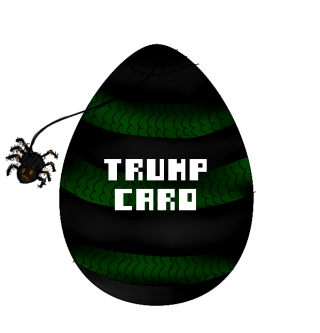
With this title we live the gaming experience peak of anguish promise from Generation 0 of HOR-RPG.
Author’s intention or not, the environments in which the player decides to dive in and obscure the psyche of surrealist nature. I will personally determine how these maps could be linked to this artistic language of ‘900 (remember that of the twentieth century many artistic movements showed that -as well as all- artists were no longer able to rely on the old certainties, and so between Dadaism, Futurism, Expressionism and Surrealism attempted to distort and look for a new perception of reality).
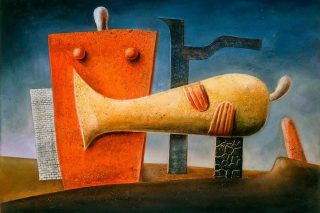
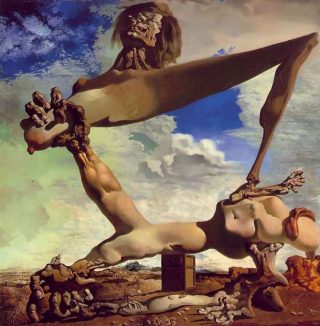
From left: Totenklage (Max von Moos, 1936) and Soft Construction with Boiled Beans (Salvador Dali, 1936)
Let’s try for a moment to compare them with screens of the game …
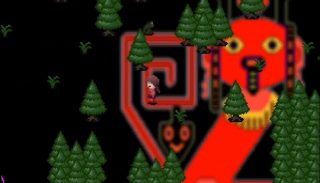
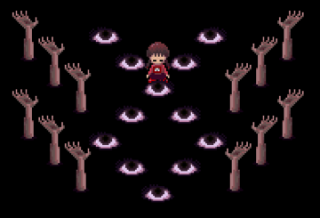
Let’s see what Wikipedia tells us about.
“Surrealism had as its main theoretician the poet André Breton, who channeled the destructive vitality of Dadaism. Breton was influenced by the reading of The Interpretation of Dreams Freud 1900; after reading it he came to the conclusion that it was unacceptable that the dream and the unconscious they had so little space in modern civilization, and then decided to found a new artistic and literary movement in which they had a key role. “
It’s still…
” Pure psychic automatism, by which one proposes to express in words or writing or otherwise, theactual functioning of thought. Control of thought,in the absence of any control exercised by reason, outside of any aesthetic and moral concern. ”
Surrealism is therefore a psychic automatism, or the process in which the unconscious, that part of us that emerges in dreams, emerges when we are awake and allows us to associate clear words, thoughts and images without inhibitions and foreordained purposes. ” (The bolding is ours)
And here it revealed the heart of a game like Yume Nikki. This is not nothing but a wonderful manifestation of the unconscious journey that many, because of the different worlds, they interpreted in a pessimistic. This definitely comes looking bleak title and its dark colors. After all,with Ao Oni We have already introduced the theme of isolation of the player, recurring element in almost all kinds of horror games of Generation 0.
So what conclusions can we draw?
Certainly the horror and RPG videogame titles that have relied on these cornerstones of the genre between 2004 and 2012 had in common the exploration experiments in this Yume Nikki was only said the peak of exploration activity, but until at least some highlights of the First Generation (the Character Drama) environments used to play an important role in ensuring the recognition of their games online.
It is always the environment to triumph in these types of HOR-Japanese RPG titles; they are claustrophobic in appearance or widespread these always have the effect of making you feel poor and dispersed player depersonalized his subjectivity is the “outside world” to prevail on the individual. An unknown outside world that can hide dangers, but mostly scary because it goes beyond what we can know. Yume Nikki (as the Surrealists’ 900) there is suggesting that these mysterious environments reside in our unconscious together with all the thoughts that we put in and repress the social order view, perhaps giving us the pessimistic view that the first great environment that does not we know it is our brains, making us aware of our monstrous unpredictability.
Maybe we should not even be surprised that we have tried to revive the atmosphere of the game experiencing the 3D rendering techniques …
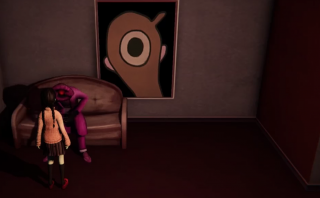
… Just as it happens today with many museums for which artistic currents develop new technologies to try to impress and at the same time to immerse the visitor to the maximum.


Photos from the museum “Getting Inside Van Gogh”
In conclusion, the language of the game, his authorial nature as a “product of the web” and the mystery that has been built around its author (we’ll talk about that later) when added contributed, together with the numerous theories that have been made and none seems to inscribe the title in a precise pattern, to build its own aura.
This is a concept we are stealing from the work of Walter Benjiamin ( “The Work of Art in the Age of Mechanical Reproduction”). I will try to explain here the best that I can, they speak essentially a concept that involves the personality of a work, the value of its uniqueness for which no other element or artistic product will equalize this work. Not randomly, as you can read from the title of the essay “technical reproducibility is appointed”, it is addressed in particular the issue of commodification and serialization that meets the cultural industry.
So yes, we are equating this game to a work of art.
I interrupt my ramblings here to measure with you the professionalism thermometer.
Professionalism Meter
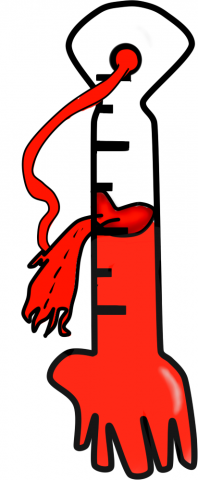 And being left hanging with a reference to the aura speech on mechanical reproduction and the “depersonalization of art” we reflect for a moment again on the intent of “Back to the future“…
And being left hanging with a reference to the aura speech on mechanical reproduction and the “depersonalization of art” we reflect for a moment again on the intent of “Back to the future“…
You are surprised to see, after all these accolades, the thermometer of professionalism with half liquid, aren’t you?
Here we are at the moment of truth.
Well, we told you in ‘Introduction that our intention was to understand how the HOR-RPG would move within a growing market …
… And the answer is that unfortunately Yume Nikki, no matter how well made, it is not a marketable product. That’s why the liquid is left on half of the meter; one half of “symbolic” in which one can recognize the maximum value of this work and its “confinement to authorial” nature.
We will explain it better in the following paragraphs …
Packaging
 In its simplicity reveals an unparalleled elegance: the labyrinth as a logo and title of the game prevail over pink little frame that contains the start of the game functions, continuous and output.
In its simplicity reveals an unparalleled elegance: the labyrinth as a logo and title of the game prevail over pink little frame that contains the start of the game functions, continuous and output.
I see these traits in a love for the gaming universe and its stylized and geometric shapes, as was the case for the identity of the first video games of the 90s.
There are many details that make the attractive title, as the circle that opens and closes on the character during rescue actions, animations and extra features (such as walking with the chair of the room) that make the gaming experience delicious.
Author-work relationship
As we promised by previous article, finally here’s the study on the issue concerning the relationship between Kikiyama and Yume Nikki.
Maybe it was not wanted, but not only the game itself had theories and speculation in general, but also the author / smoke (even its gender is unknown) of this surrealist cult is one of the most mysterious in the current, and for a long bit ‘of time, in the years between 2005 and 2014, it’s been topic of discussion.
There are in fact various oddities that surround the figure of Kikiyama and their behavior.
We begin by saying that it is unknown whether they worked hard to distribute the game properly. In “product history” it is written that the first forum on which it is spoken of Yume Nikki is 5Channel, but that post (also currently unavailable on the site) do not know whether it was done by Kikiyama themselves, since it seemed You only put on your site and did not seem to have or blog, or social profiles … And didn’t post on any forum. The only pseudo-distribution business was to put the game on their site … Maybe. Because it may be also promoted with another account but we don’t know anything.
So as we begin our own personal list of mysteries:
-Who really made Yume Nikki known?
Let’s go forward in years. The game has its English version, it became popular, Kikiyama continues to update and this is the only contact he has with the “outside world” of the web.
Eventually the game arrives at 0.09 version.
Kikiyama disappears into thin air. There are no game updates, and given the lack of any kind of other way to communicate with the user, and we assume that he had not even responded to any e-mail that were sent. Here we have the First Kikiyama Disappearance from the entire web … Until September 17, 2005, in which releases a version named 0.10, which fixed some bugs. Then we have the Second Kikiyama Disappearance after the fixed version 0.10, released around the same time, perhaps Kikiyama felt they had done their work and disappears for seven years.
In fact, in February 2012, the publisher Playism “took control of the game” and published on its distribution platforms (including Steam) a new version of Yume Nikki, version 0.10A, stating that it was created by Kikiyama on the same day he put on his website version 0.10. This version adds several points to the list:
-Why Kikiyama has not posted immediately version 0.10A ? Why make us wait seven years?
-How did Playism contact Kikiyama, if they don’t answer to any kind of email?
-And if exceptionally Kikiyama had answered Playism why Kikiyama, which seems to have not even put to put the game out of forum at the time when it came out, would have to worry about having a publisher and then transfer rights to companies?
Unfortunately even today these questions do not have answers. So we can only move forward.
From 2013 begins the mysterious, shoddy and commercial ancillary works dedicated to Yume Nikki, the manga and light novel … The companies involved in the publication of these works said that Kikiyama gave permission, but all we wonder why.
And… We don’t have any news of Kikiyama, not even game updates (because it seems that the game was still in need of updates), then we have the Third and final Kikiyama Disappearance (from the web, remember).
Their site became unavailable for an unattainable period in 2015 and the fans went into a panic: they also began to also assume their death because of an earthquake that in 2011 that hit Japan and made many victims, and then it was decided at a certain point that Kikiyama was among them. But the site came back in 2018 … But with one small difference.

The site in July 2008, which remained like this until 2018

The site 10 years later, March of 2018
You see that logo in the second image? Yes, it is the logo of the 20 EUR infamous reboot.
For the thousands of questions from fans about the state of Kikiyama, Kadokawa said they were fine, that they were alive and had actively contributed to the reboot … But no, we have the same questions that have been presented above, in the case of Playism. In fact, many have even suggested that Kikiyama is effectively dead and or (less likely theory, because it would be really risky for companies) Playism, Kadokawa and whoever is behind the manga and light novels, is lying on the rights given by Kikiyama; or (perhaps more plausible theory) if we assume that after their death the rights have passed to someone else.
Something that for some people has fueled the theory of Kikiyama’s death is the game itself. According to this other theory after having released the latest version Kikiyama did not die for the 2011 earthquake, but he committed suicide … Just like you see in the game’s ending, then according to this hypothesis Yume Nikki could also be the last wills of Kikiyama.
On one hand, this would answer the question of why Kikiyama has not posted immediately 0.10A version, and maybe it was found by Playism somehow (here could also join the theory of the rights given to someone, maybe one of Kikyama’s acquaintances)
And, on the other hand, since 2005 Kikiyama, if they really committed suicide, would not be the only case of suicide in the HOR-RPG current.
We would like to open a brief parenthesis on Re: Kinder, remake (made by the same author) of the game Kinder, originally came out in 2003, created by Horafuki Yokochou who takes the pseudonym of Parun.
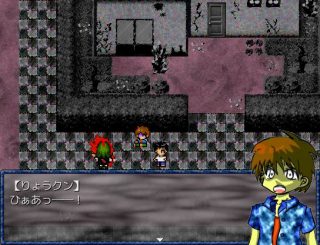
Screenshots from Re: Kinder
On February 3, 2011 a post on Parun’s blog wrote by a distant friend announces the sad news: September 10, 2010 Yokochou jumped from the ninth floor of his house.
Given our ignorance of the Japanese language, and the crappy translation of Google Translate, we could not understand what the post meant, but if Parun jumped… Yes, it is very likely that he suffered from some problems too, although this could also be a conspiracy theory, in Kikiyama’s case.
Here, then, how they have developed a series of circumstances that favored the construction of theories, a path that led to only one certainty: in the HOR-RPG community the creator disappears definitely. They aren’t a user who creates content, but “abstract entity”, someone or something that shows us a hidden world that turns out some kind of sick revelation of his subconscious.
He often does not even look over to these people as professionals or aspiring. Unfortunately, many times this is part of the “social game” that these types of products are going. Consider the issue of the collective-social. For those who did not know what it is we are talking about images and recurrent themes in a society, in fact-that sometimes some call platitudes or urban myths, and this is a very expensive matter to the entertainment industry. Well, according to this idea we, as people, tend very often to work on imagination rather than seeking concrete data to observe the world around us.
-For the “development history” Yume Nikki: Podcast “Nelle storie” by Sara Gavioli,Kikiyama and the dream diary
Defects
Well, that was that we watched when we spoke of the professionalism thermometer. It is a thorny issue that we mentioned in the product’s history, when we appointed the many unsuccessful ancillary works that tried to revive Yume Nikki with completely different types of tones and languages.
This is not a product that can survive in the complex world of marketing, A world first that provides a broad line of communicability. In practice it uses a “plain language for all” which originated in the classical Hollywood narrative, an element that often characterizes these types of works “for the masses.”
The said commercial world is a complicated world, particularly in the entertainment industry. An industry that allows a viewer (or player, why not), by the partial identification with the characters, to exorcize the fears that haunt her daily life.
First of all, commercial work chooses a main theme and argues as clearly and legibly as possible, which is why often in danger of falling into the mainstream.
Often however, the aura of ‘ “art” has always been associated with a strong individualism thanks to which each, through interpretations same or realization of a work, you can feel the protagonist.
Yume Nikki, needless to say, fits perfectly in the second case. The estrangement of the title during the explorations (a completely opposite concept identification: Ao Oni even seemed to have had better luck with ancillary works), the subjectivity that every player feels call him when talking about their thoughts on the product and the nature of “creative entity” author contributed, again, on the one hand to build an important personality aura of the game but on the other hand have made it almost impossible to adapt, as it is in its nature, in a commercial manner.
Conclusion
We elect Yume Nikki pillar of individualism, a member of the melancholy memory of something that nowadays you might not realize (as has happened to other more recent works and which will be discussed, such as the strange case of Faust Alptraum and Pocket Mirror, a title that will be present in Back to the Future) because of constant social changes that change from year to year, from decade to decade and that also occur here, on the World Wide Web.
A change that is observed in the type of audience and the types of people we become. A change that will be observed from the next article, with the very first approaches to construction of the characters that will anticipate the Character Drama.

